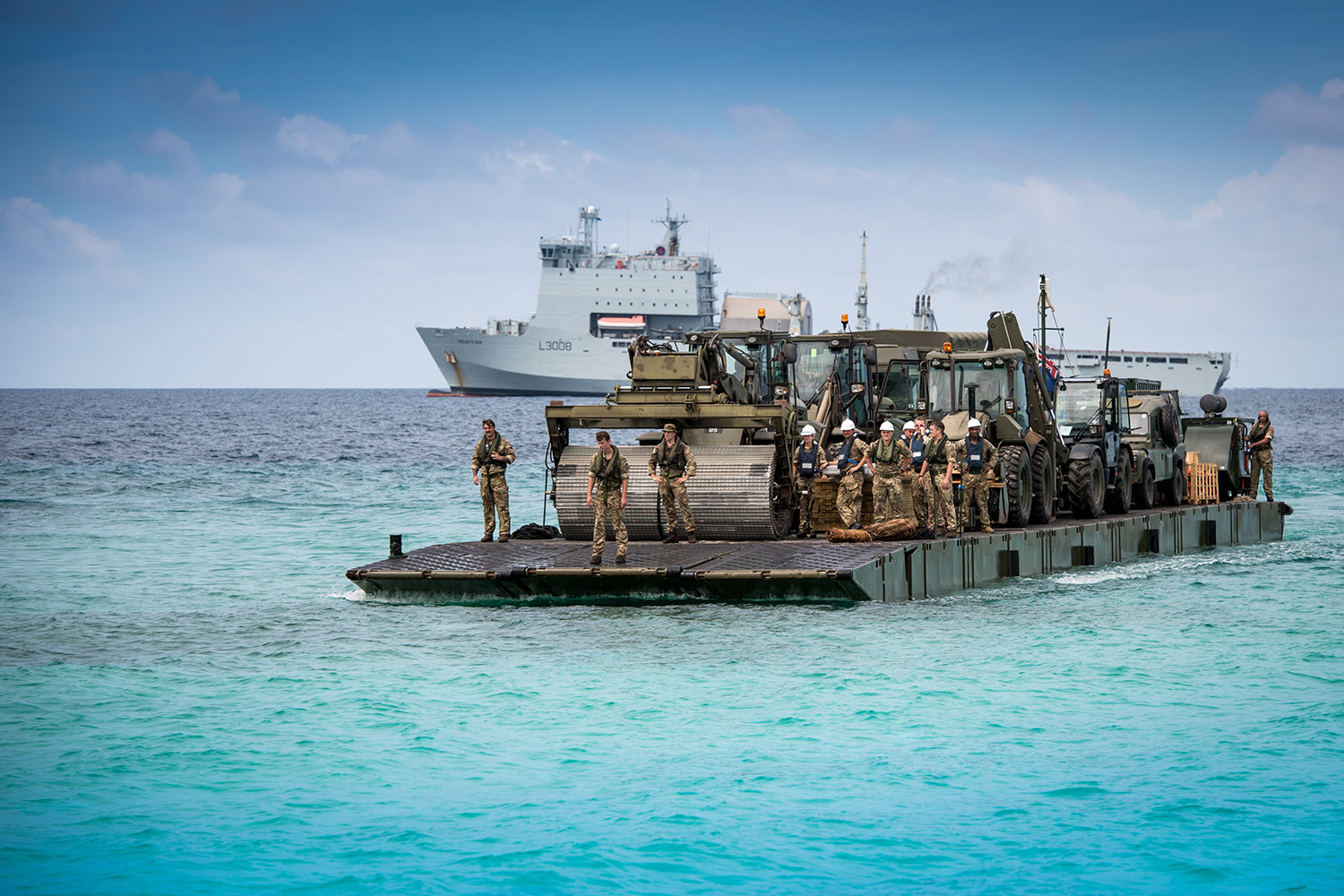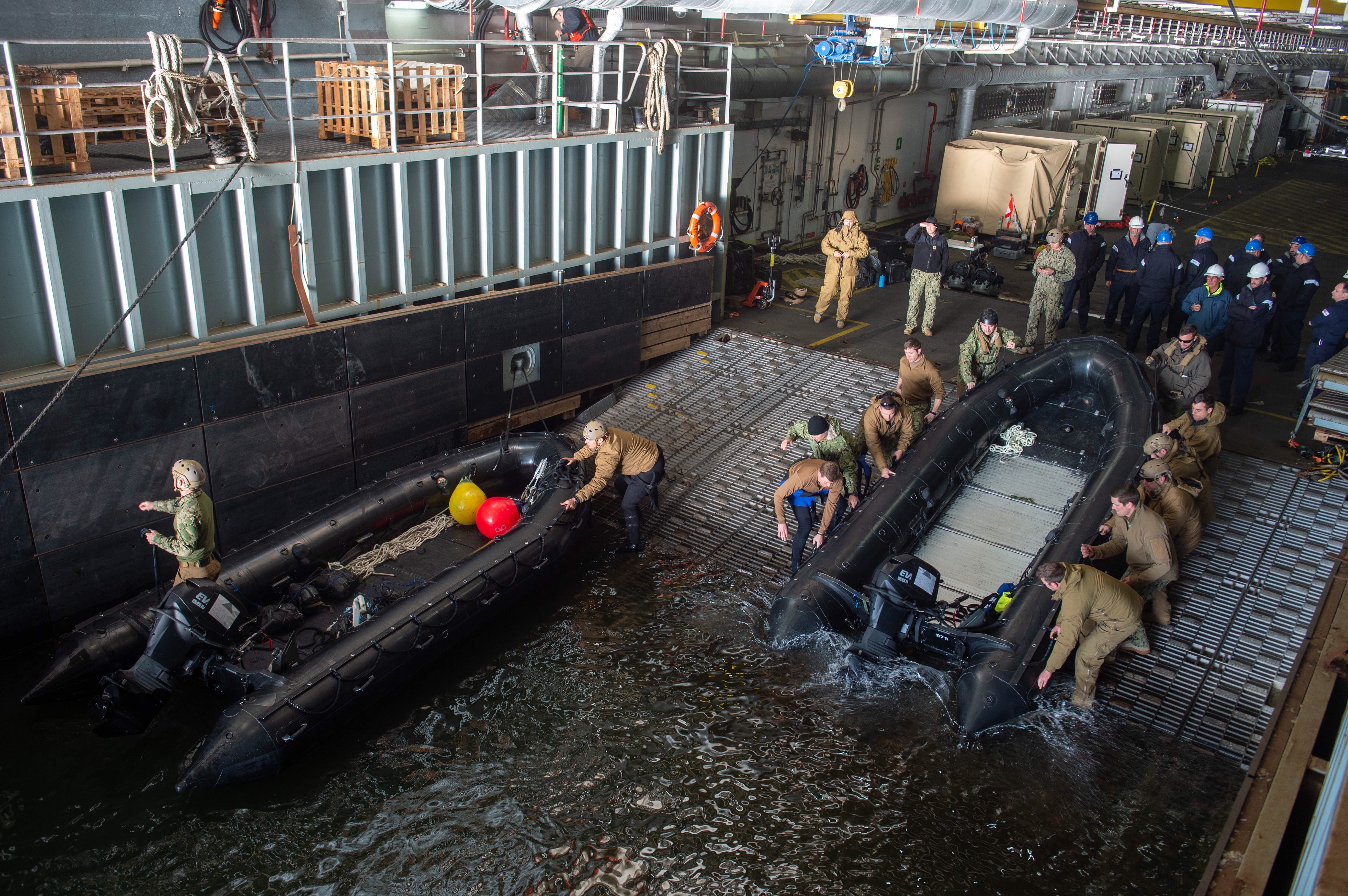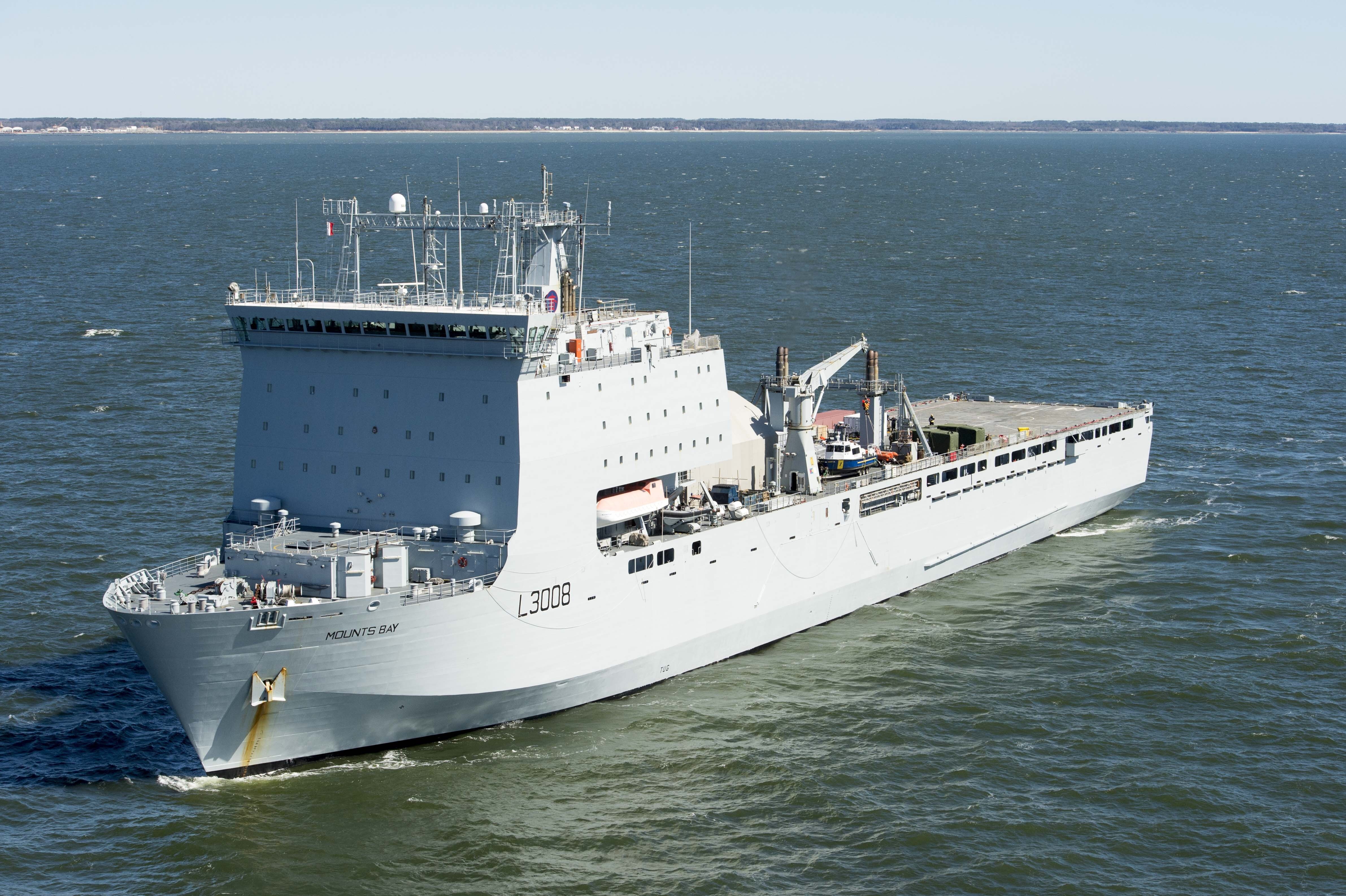
ABOARD ROYAL FLEET AUXILIARY SHIP MOUNTS BAY — One of three British Bay-class landing ships has spent nearly two years in the Western Atlantic and the Caribbean Sea, both looking after British interests as well as finding ways to partner with the U.S. Navy.
RFA Mounts Bay (L3008) is a Bay-class auxiliary landing ship dock (LSD(A)) in the Royal Fleet Auxiliary. The ship, homeported in Falmouth, U.K., has been in the Caribbean since July 2017 for an Atlantic Patrol Tasking North deployment.
“The APT(N) task centers on reassurance to U.K. overseas dependent territories, providing humanitarian and disaster relief during the main hurricane season (June to November) and conducting counter narcotic patrols as part of the wider international effort,” according to the RFA website.
In the 2017 hurricane season the ship delivered aid to Anguilla, the British Virgin Islands and the Turks and Caicos Islands in the wake of damage from hurricanes Irma, Jose and Maria.
The ship and its aircraft have also kept busy on the counter-drug portion of their mission. In January, the ship partnered with a U.S. Coast Guard Helicopter Interdiction Tactical Squadron and law enforcement detachment, conducting a 1,200-mile sail together so the LEDET could get used to working with Mounts Bay’s small boats team and the U.S. and British forces could get used to tracking and stopping drug runners in the Caribbean.
Mounts Bay has also found time to work with partners – most recently with the U.S. Navy’s mine countermeasures community.

Mounts Bay Commanding Officer Capt. Jed MacAnley told USNI News after the mine countermeasures event that his ship is used to working with helicopters and small boats to conduct its missions, so in that respect the MCM exercise was in line with the crew’s expertise. But, he added, the unmanned vehicles used in the event were larger than what the crew typically moves around the deck – particularly the Common Unmanned Surface Vehicle (CUSV) – which meant the crew had to do a little extra planning before loading and offloading unmanned systems.
“That gave us just a little bit more challenge to make sure that we got the right things in the right place, because once you’ve got it set it’s very difficult to start swapping around,” he said.
“Even though we’ve got a big deck out there, there just isn’t spare space to swap things around as you might want to.”

The Bay-class ships – Mounts Bay, RFA Cardigan Bay (L3009) and RFA Lyme Bay (L3007) – are most similar to the U.S. Navy’s Whidbey Island-class dock landing ships (LSD41/49). They can travel at 18 knots, have a range of 8,000 nautical miles and can operate LCU10 amphibious cargo transport vehicles and carry two LCVP Mk5 amphibious troop transport vehicles.
The RFA is a civilian-manned component of the Royal Navy, akin to the U.S. Navy’s Military Sealift Command. RFA “delivers worldwide logistical and operational support for the wide range of tasks the Royal Navy undertakes including warfighting, counter-piracy, humanitarian and disaster relief, and counter-narcotics operations,” according to the RFA website. The organization has one casualty ship, the three Bay-class landing ships, three Fort-class stores ships and four tankers.





